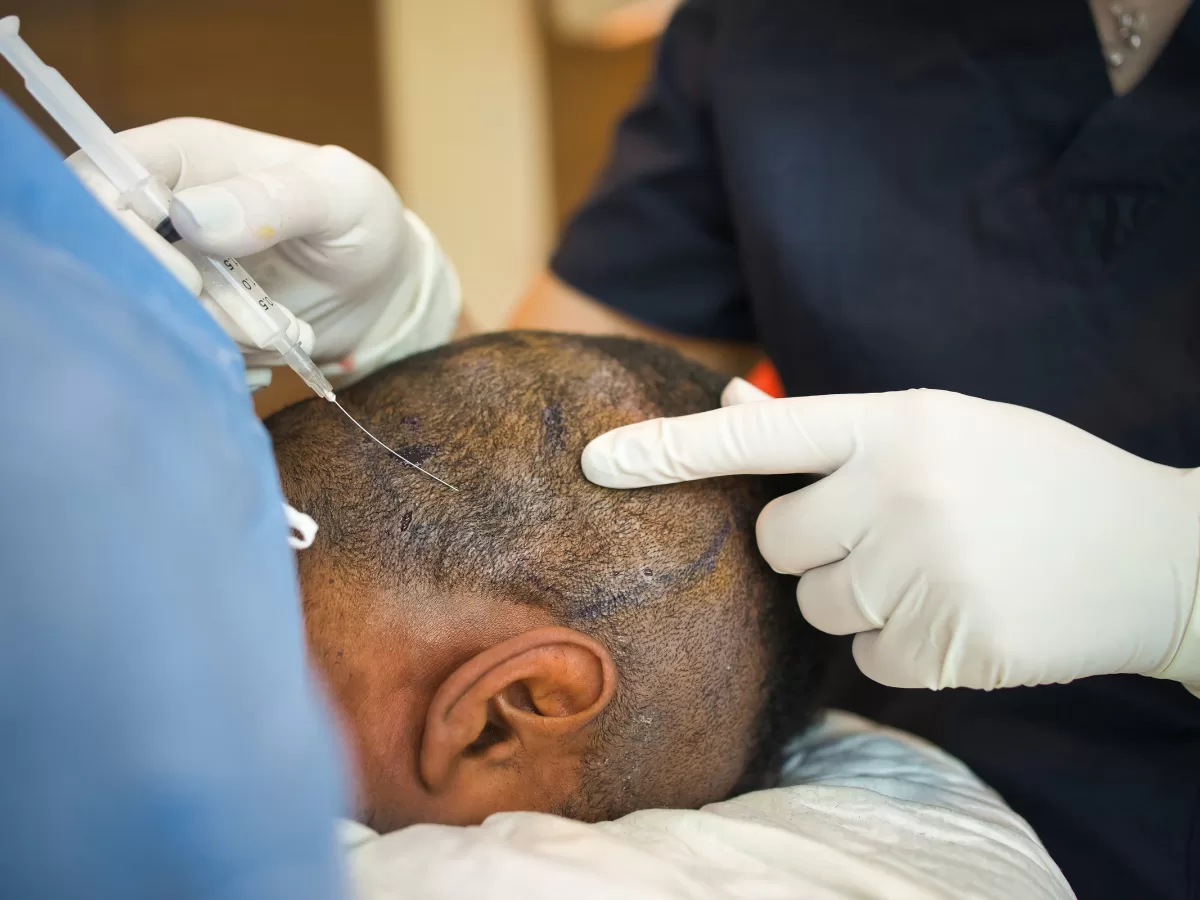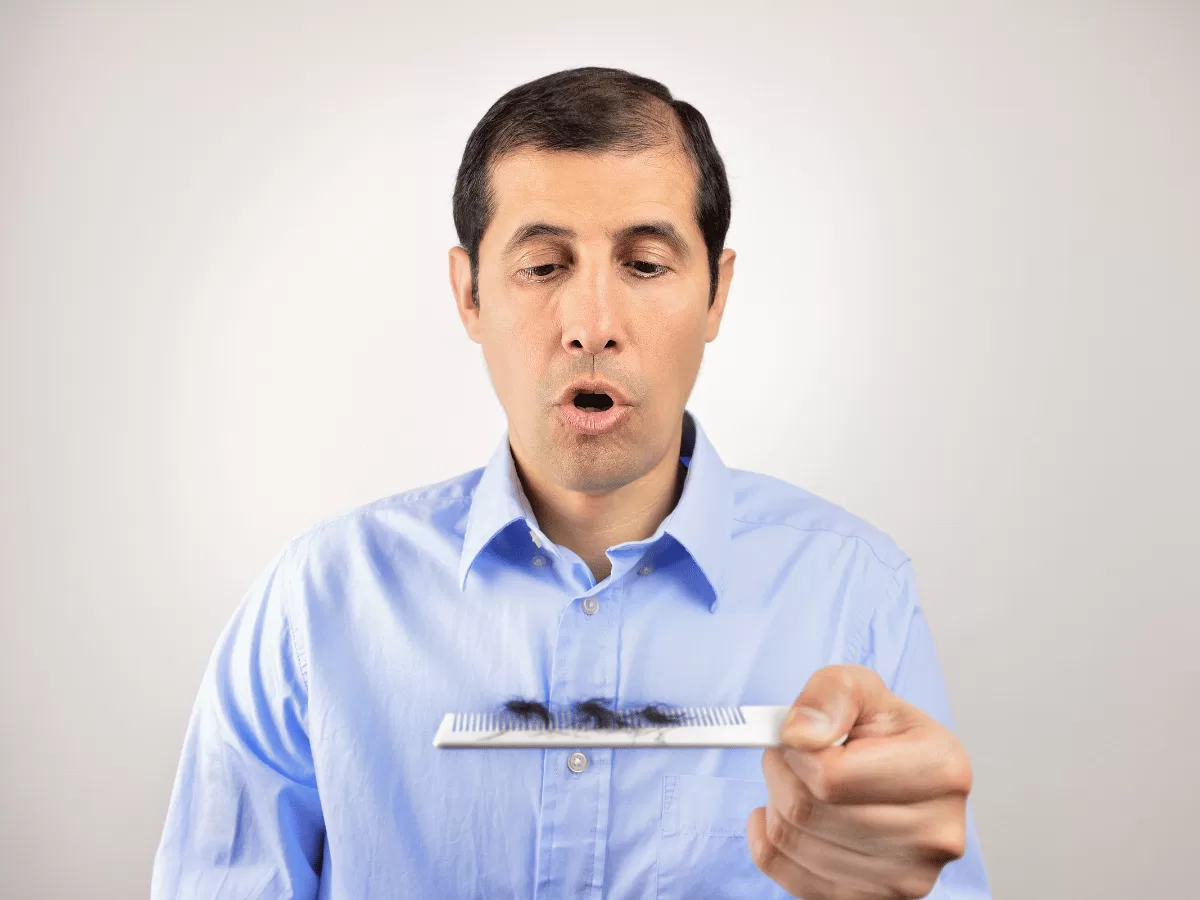
Does a Hair Transplant Hurt? The Truth About Pain and Comfort at Luxe
For anyone considering a hair transplant, a constellation of questions usually comes to mind. But one concern often shines brighter and causes more hesitation than any other: “Will it hurt?”
The fear of a painful, grueling procedure is a significant barrier that prevents many people from pursuing a solution that could restore their hair and their confidence. This anxiety is often fueled by misconceptions about surgery in general or outdated stories from a bygone era of hair restoration.
So, let’s address this fear head-on. The short answer is: when performed correctly at a modern, patient-focused clinic, a hair transplant involves minimal discomfort. The fear of the procedure is almost always far worse than the reality of the experience.
At Luxe, we don’t just view patient comfort as a nice-to-have; it is a cornerstone of our entire philosophy and process. We believe your journey to a fuller head of hair should be as calm, comfortable, and anxiety-free as possible. This guide will provide the truth about pain and comfort, breaking down the procedure step-by-step so you know exactly what to expect and how we ensure you feel at ease from start to finish.
The Key to a Comfortable Procedure: Modern Local Anesthesia
The magic behind a comfortable hair transplant isn’t magic at all—it’s the precise and expert application of local anesthesia. Unlike general anesthesia, which puts you completely to sleep, local anesthesia simply numbs a specific area of your body. In this case, it’s the donor area at the back of your head and the recipient area at the front or crown. Once the anesthetic takes effect, your scalp will be completely numb for the duration of the procedure.
This brings us to the most critical part of the conversation about pain. The only point of any significant discomfortduring the entire hair transplant day is the administration of these initial anesthetic injections.
Most patients describe this sensation as a series of small, quick “pinches” or stings that last for only a few minutes. A common and accurate comparison is the feeling of getting dental injections before a filling. It’s a temporary, manageable discomfort that quickly gives way to complete numbness.
At Luxe, we go to great lengths to minimize even this brief discomfort using a multi-faceted approach:
- Vibrating Tools: We often use a small, vibrating device placed on the scalp near the injection site. The vibration signals travel along the same nerve pathways as pain signals, effectively “distracting” the nerves and dulling the pinching sensation.
- The Smallest Needles: We use very fine-gauge needles to ensure the injections are as gentle as possible.
- A Calm & Slow Approach: We don’t rush the process. The anesthetic is administered slowly and deliberately, which is much more comfortable than a quick, forceful injection. We talk you through it, ensuring you are relaxed and prepared.
Once your scalp is numb, the most challenging part is over. For the remaining 6-8 hours of the procedure, you should not feel any sharp pain at all.
What to Expect During the Procedure Itself: A Day of Comfort
A hair transplant is a long day, but it shouldn’t be an uncomfortable one. We design the experience to feel more like a relaxing day out of the office than a clinical surgery. Here’s what the different phases feel like:
Phase 1: The Extraction (FUE/DHI)
After the anesthesia has taken effect, our surgical team will begin harvesting the donor hair follicles from the back of your head. During this process, you will be lying comfortably, often face down on a specially designed headrest. You will not feel pain. Patients typically report feeling:
- Slight pressure or a gentle tugging sensation.
- A low, quiet whirring sound from the micro-punch tool.
- The sensation of the team working, but no sharpness or pain.
Many of our patients find this phase so relaxing that they fall asleep.
Phase 2: The Implantation
Once all the necessary grafts have been harvested, the implantation phase begins. You will typically be sitting up in a comfortable, semi-reclined position. During this part of the procedure, our surgeon will meticulously place each individual graft into the recipient area. Similar to the extraction phase, you will be completely numb and will not feel any pain.
Our Commitment to Your Comfort Throughout the Day
We understand that comfort is about more than just the absence of pain. It’s about your entire experience. At Luxe, your procedure room is a private, calm suite where you are in control. You can:
- Watch movies or binge-watch your favorite TV shows on a personal screen.
- Listen to music or podcasts.
- Take breaks as needed to stretch or use the restroom.
- Enjoy a complimentary lunch that we provide.
- Communicate with our team at any time.
Our goal is to make the hours fly by, turning a day you might have been dreading into a surprisingly pleasant and productive experience.
The Truth About Post-Procedure Pain & Recovery
The question of pain doesn’t end when you leave the clinic. Understanding what to expect during recovery is just as important for your peace of mind.
The First 24-48 Hours
The local anesthetic will wear off a few hours after the procedure is complete. As it does, you will not experience sharp, intense pain. Instead, most patients describe the sensation in the donor and recipient areas as:
- Tightness or Soreness: Similar to a mild muscle ache.
- A Dull Ache: A low-grade, persistent ache.
- Tenderness: The scalp will be tender to the touch.
A good analogy is the feeling of a mild sunburn. This discomfort is typically at its peak in the first 24 hours and is easily managed with the pain medication we prescribe. We will send you home with a comprehensive post-operative care kit and clear instructions.
Managing Discomfort at Home
Following our post-op instructions is the key to a smooth and comfortable recovery. We advise patients to:
- Sleep with their head elevated on a couple of pillows for the first few nights. We provide a special neck pillow to help you do this comfortably and protect the grafts.
- Avoid touching, rubbing, or scratching the scalp.
- Use a spray bottle with a saline solution to keep the scalp clean and hydrated, which can alleviate tightness.
The “Itchiness” Phase
Around 5-7 days into recovery, itchiness is a very common sign of healing. While annoying, it is not painful. It is crucial to resist the urge to scratch, as this can dislodge the newly implanted grafts. The saline spray can help soothe the itch.
Significant pain beyond the first 2-3 days is very rare. If it occurs, it could be a sign of a complication like an infection, and you should contact us immediately.
Top Searched FAQs About Hair Transplant Pain
What is the most painful part of a hair transplant?
Unanimously, the most uncomfortable part is the initial 5-10 minutes of receiving the local anesthetic injections. Once the scalp is numb, the rest of the procedure should be virtually painless.
Is the donor area painful after FUE?
The donor area is often described as feeling more sore and achy than the recipient area, similar to a muscle ache. This is because thousands of tiny excisions have been made. This soreness is most noticeable for the first 1-2 days and is well-controlled with mild pain relievers.
How long does the pain last after a hair transplant?
Significant discomfort or soreness typically only lasts for 2-3 days. A feeling of tightness or tenderness can persist for a bit longer, but most patients feel comfortable enough to return to non-strenuous work within a few days.
Do they put you to sleep for a hair transplant?
No. A hair transplant is performed under local anesthesia, meaning you are fully awake and alert throughout the entire procedure. This is much safer than general anesthesia and allows you to be an active participant in your comfort, such as by requesting breaks or adjusting your position.
Is the recovery from a hair transplant painful?
The recovery is better described as a period of mild discomfort rather than one of pain. You will need to be very careful with your scalp and will experience some soreness, tightness, and itching, but it is not typically considered a painful recovery compared to other surgical procedures.
Is DHI less painful than FUE?
No, the pain profile for both DHI and FUE is virtually identical. Both methods require local anesthesia to numb the scalp, and both involve extracting and implanting individual follicles. The sensation during the procedure and the post-operative discomfort are comparable for both techniques.
What can I take for pain after my transplant?
We will provide you with a prescription for pain medication to manage any discomfort in the first couple of days. After that, over-the-counter pain relievers like Tylenol (Acetaminophen) are usually more than sufficient if needed. We advise against blood-thinning pain relievers like Aspirin or Ibuprofen immediately after the procedure unless cleared by your surgeon.
Conclusion: Your Comfort is Our Priority
The fear of pain is powerful, but it shouldn’t be the reason you abandon your goal of regaining your hair. The reality of a modern hair transplant at a premier clinic like Luxe is a testament to how far medical technology and patient-centered care have come.
The experience is defined not by pain, but by minimal, temporary discomfort managed by experts at every turn. From the moment you walk through our doors, our entire team is dedicated to ensuring you are informed, relaxed, and physically comfortable.
Don’t let the fear of “what if it hurts” hold you back. The truth is, with the right team and the right techniques, it doesn’t have to. Contact us at Luxe to schedule a consultation, where we can answer all of your questions personally and show you just how comfortable and rewarding a modern hair transplant can be.



